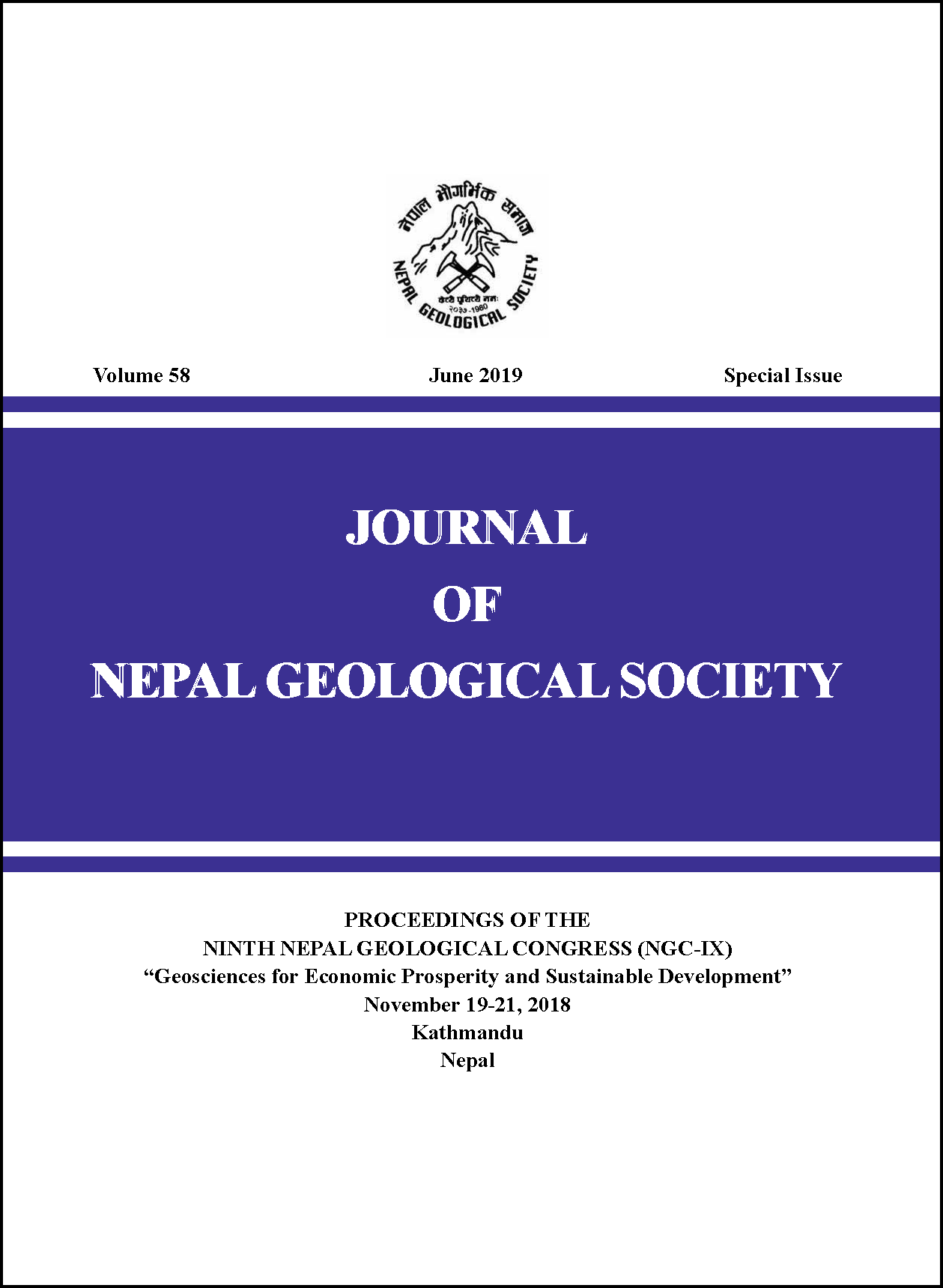Electrical resistivity survey in the investigation of hydrogeological condition of Sylhet-Sunamganj Haor area, Bangladesh
DOI:
https://doi.org/10.3126/jngs.v58i0.24570Keywords:
Resistivity, Hydrogeological condition, Aquifer, AquitardAbstract
Bangladesh depends on the ground water resources to meet domestic and agricultural demands. Electrical Resistivity Sounding survey, borehole litho logs and the water quality data of the area have been analysed for the assessment of subsurface hydro geological condition of the study area, located in north eastern region of Bangladesh. Hydro geological data are needed to determine the basic parameters required for the characterization of aquifer. VES can provide subsurface information related to groundwater condition in conjunction with borehole and water quality information. Resistivity soundings were carried out to establish the characteristics of the aquifer in the study area. Results of resistivity soundings and borehole data reveal that the subsurface formations are made up of clay, silty clay, clayey sand, fine, medium and coarse sands. The hydro stratigraphic unit of the study area comprises of three aquifer systems separated by aquitards. Aquifer-1 known as shallow aquifer, shows thickness in the range from 4 m to 104 m. Maximum thickness of Aquifer-1 is about 104 m at At para, Kishoreganj and minimum thickness is about 4 m at Madan, Netrokona. Aquifer-2 shows thickness variation from 3 m to 135 m. Maximum thickness of Aquifer-2 is about 135 m at Madhabpur, Habiganj and minimum thickness is about 3 m at Bajitpur, Kishoreganj. Baseof Aquifer-3, the deep aquifer could not be identified. Maximum depth of the upper boundary of this unit is about 171 m at Madhabpur,Habiganj and minimum depth is about 100 m at Mohanganj, Netrokona. At Madan, Netrokona low resistivity value of about 7 ohm below 107 m depth is found against a fine to medium sand layer suggesting saline formation water.
Downloads
Downloads
Published
How to Cite
Issue
Section
License
© Nepal Geological Society




